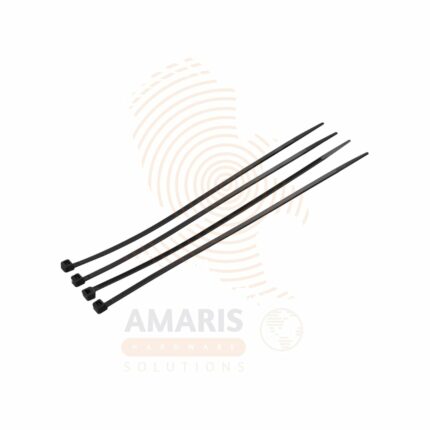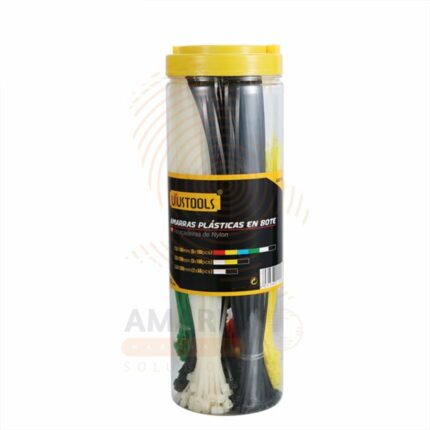Cable Management refers to the organization and protection of electrical and data cables to ensure safety, efficiency, and a clutter-free environment. Proper cable management prevents tangling, reduces tripping hazards, minimizes electromagnetic interference, and improves airflow in electronic systems. Common solutions include cable ties, clips, and straps for bundling wires, cable trays and raceways for routing and concealing cables, and sleeves or conduits for added protection. In data centers and offices, patch panels, cable organizers, and under-desk trays help maintain neat and accessible connections. Advanced systems may include labeling, color-coding, and modular management tools for easy identification and maintenance. Effective cable management enhances system performance, simplifies troubleshooting, and ensures compliance with safety standards in residential, commercial, and industrial settings.
Insulating tape, commonly known as electrical tape, is a type of flexible tape specifically designed for insulating electrical conductors and providing protection against electrical currents. It typically consists of a thin, flexible backing material, often made of vinyl or rubber, coated with an adhesive on one side. The tape is used to wrap around exposed electrical wires or conductors to create a barrier that insulates them from each other and from the surrounding environment.
The primary purposes of insulating tape include preventing short circuits, protecting against electrical shocks, and securing and bundling wires. The tape is often color-coded to indicate its electrical properties or intended use. Insulating tape is a fundamental tool in electrical work, providing a simple and effective means of insulating and securing electrical connections in a variety of applications.
Nylon cable ties, commonly known as zip ties or cable ties, are versatile fastening devices used for bundling and securing items. They are typically made of nylon, a durable and flexible synthetic polymer, and come in a variety of colors, including black. The primary purpose of black nylon cable ties is to provide a discreet and unobtrusive means of organizing and securing cables, wires, or other objects. They feature a serrated structure and a one-way locking mechanism, allowing for easy and secure bundling by threading the tie through its head and pulling it tight. The black color is often chosen for applications where a low-profile and inconspicuous appearance is desired, such as in cable management, electrical work, or other situations where aesthetics play a role.
A nylon cable tie, commonly referred to as a zip tie or tie-wrap, is a fastening device used to secure and bundle cables, wires, or other items. It is typically made of nylon, a durable and flexible synthetic polymer. The tie consists of a strap with an integrated gear rack or serrated mechanism, and a small, pointed tail. To use it, the pointed end is inserted through a self-locking mechanism in the head of the tie, forming a loop that can be tightened securely around the items to be fastened. Nylon cable ties are widely used in various industries for organizing and securing wiring and other components due to their ease of use, versatility, and reliability. The term "barrel packing" may refer to the packaging format in which these ties are sold, often arranged in cylindrical or barrel-shaped containers for easy dispensing.


 Acrylic Sealants
Acrylic Sealants Adhesive Application Tools
Adhesive Application Tools Construction Adhesives
Construction Adhesives Double-Sided Tape
Double-Sided Tape Masking Tape
Masking Tape Epoxy & Resins
Epoxy & Resins Duct Tape
Duct Tape Electrical Tape
Electrical Tape
 Auto Body Repair Tools
Auto Body Repair Tools Automotive Wrenches & Socket Sets
Automotive Wrenches & Socket Sets Battery Chargers & Jump Starters
Battery Chargers & Jump Starters Car Jacks & Stands
Car Jacks & Stands Car Wash & Detailing Products
Car Wash & Detailing Products Diagnostic Tools
Diagnostic Tools Tire Inflators & Wheel Tools
Tire Inflators & Wheel Tools Oil & Lubricants
Oil & Lubricants Vehicle Lighting
Vehicle Lighting Suspension Tools
Suspension Tools Vehicle Maintenance Tools
Vehicle Maintenance Tools
 Adhesives & Sealants
Adhesives & Sealants Bricks & Blocks
Bricks & Blocks Cement & Concrete
Cement & Concrete Drywall & Plaster
Drywall & Plaster Insulation Materials
Insulation Materials Roofing Materials
Roofing Materials Paints, Primers & Coatings
Paints, Primers & Coatings Marking & Layout Tools
Marking & Layout Tools Quarry Machinery
Quarry Machinery
 Electric Motors
Electric Motors Electrical Boxes & Panels
Electrical Boxes & Panels Electrical Cables & Wires
Electrical Cables & Wires Extension Cords & Power Strips
Extension Cords & Power Strips Fuses & Relays
Fuses & Relays Lighting Fixtures & Bulbs
Lighting Fixtures & Bulbs Conduit & Fittings
Conduit & Fittings Cable Management
Cable Management Measuring & Test Equipment
Measuring & Test Equipment Circuit Breakers
Circuit Breakers Connectors & Terminals
Connectors & Terminals Switches & Sockets
Switches & Sockets
 Screws
Screws Bolts
Bolts Nuts
Nuts Washers
Washers Rivets & Riveter
Rivets & Riveter Anchors
Anchors Nails
Nails Threaded Rods
Threaded Rods Clips & Clamps
Clips & Clamps
 Garden Fencing
Garden Fencing Garden Furniture Hardware
Garden Furniture Hardware Agricultural Machinery
Agricultural Machinery Lawn Mowers
Lawn Mowers Trimmers & Edgers
Trimmers & Edgers Shovels & Spades
Shovels & Spades Rakes & Hoes
Rakes & Hoes Pruning Shears & Loppers
Pruning Shears & Loppers Watering Systems
Watering Systems Digging Equipment
Digging Equipment Pond Equipment
Pond Equipment
 Generator Accessories
Generator Accessories Inverters
Inverters Diesel & Gasoline Generators
Diesel & Gasoline Generators Power Inverters
Power Inverters Transfer Switches
Transfer Switches Portable Generators
Portable Generators Air Compressor
Air Compressor Pressure Washers
Pressure Washers Water Pumps
Water Pumps
 Fastening Tools
Fastening Tools Files & Rasps
Files & Rasps Glass working Tools
Glass working Tools Hammers
Hammers Hand Tool Accessories
Hand Tool Accessories Screwdrivers
Screwdrivers Wrenches & Spanners
Wrenches & Spanners Pliers & Cutters
Pliers & Cutters Saws & Blades
Saws & Blades Measuring Tools
Measuring Tools Chisels & Punches
Chisels & Punches Allen Keys & Hex Keys
Allen Keys & Hex Keys Ratchets & Socket Sets
Ratchets & Socket Sets Drilling & Tapping Tools
Drilling & Tapping Tools Pry Bars & Demolition Tools
Pry Bars & Demolition Tools Pulling & Extraction Tools
Pulling & Extraction Tools Punching & Perforating Tools
Punching & Perforating Tools Scrapers & Abrasive Tools
Scrapers & Abrasive Tools Utility Knives
Utility Knives Woodworking Tools
Woodworking Tools Clamps & Vises
Clamps & Vises
 Hinges & Latches
Hinges & Latches Hooks & Brackets
Hooks & Brackets Door Handles & Locks
Door Handles & Locks Drawer Slides & Cabinet Hardware
Drawer Slides & Cabinet Hardware Window Hardware
Window Hardware Chains & Cables
Chains & Cables Casters & Wheels
Casters & Wheels Shelving & Storage Systems
Shelving & Storage Systems Cutting Tools
Cutting Tools
 Fans & Blowers
Fans & Blowers HVAC Filters
HVAC Filters Insulation for HVAC
Insulation for HVAC Air Conditioners
Air Conditioners Ventilation Ducts & Fittings
Ventilation Ducts & Fittings Thermostats & Controllers
Thermostats & Controllers Refrigerants
Refrigerants
 Food Processing Machinery
Food Processing Machinery Gaskets & Seals
Gaskets & Seals Harvesting Equipment
Harvesting Equipment Hydraulic Fittings
Hydraulic Fittings Industrial Fasteners
Industrial Fasteners Industrial Hoses
Industrial Hoses Bearings & Bushings
Bearings & Bushings Belts & Pulleys
Belts & Pulleys Lubricants & Greases
Lubricants & Greases Metal Sheets & Bars
Metal Sheets & Bars Agricultural Processing Machinery
Agricultural Processing Machinery Poultry Processing Equipment
Poultry Processing Equipment
 Lifting Equipment
Lifting Equipment Transport Equipment
Transport Equipment Storage Solutions
Storage Solutions Conveyors and Accessories
Conveyors and Accessories Construction Machinery
Construction Machinery Screening Equipment
Screening Equipment Heavy Machinery
Heavy Machinery
 Paint Brushes & Rollers
Paint Brushes & Rollers Paint Sprayers & Accessories
Paint Sprayers & Accessories Paint Strippers & Thinners
Paint Strippers & Thinners Paint Trays & Accessories
Paint Trays & Accessories Primers & Undercoats
Primers & Undercoats Interior Paints
Interior Paints Exterior Paints
Exterior Paints Varnishes & Stains
Varnishes & Stains Spray Paints
Spray Paints
 Pipes & Fittings
Pipes & Fittings Plumbing Tools
Plumbing Tools Pumps & Motors
Pumps & Motors Valves & Taps
Valves & Taps Faucets & Fixtures
Faucets & Fixtures Hoses & Tubing
Hoses & Tubing Water Heaters
Water Heaters Drainage Systems
Drainage Systems Sealants & Adhesives for Plumbing
Sealants & Adhesives for Plumbing
 Nail Guns
Nail Guns Outdoor Power Equipment
Outdoor Power Equipment Planers or Woodworking Power Tools
Planers or Woodworking Power Tools Pneumatic Tool
Pneumatic Tool Power Tool Accessories
Power Tool Accessories Drills & Drivers
Drills & Drivers Saws
Saws Grinders & Sanders
Grinders & Sanders Heat Guns
Heat Guns Impact Wrenches
Impact Wrenches Batteries & Chargers
Batteries & Chargers Construction Power Tools
Construction Power Tools Cutting Tools
Cutting Tools Demolition & Breaking Tools
Demolition & Breaking Tools Router
Router Woodworking Machinery
Woodworking Machinery
 Safes
Safes Security Cameras
Security Cameras Personal Protective Equipment (PPE)
Personal Protective Equipment (PPE) Fire Safety Equipment
Fire Safety Equipment Locks & Padlocks
Locks & Padlocks Motion Sensors & Alarms
Motion Sensors & Alarms
 Shelving Units
Shelving Units Storage Bins & Containers
Storage Bins & Containers Toolboxes & Tool Chests
Toolboxes & Tool Chests Pegboards & Hooks
Pegboards & Hooks Workbenches
Workbenches Drawer Organizers
Drawer Organizers Labeling Supplies
Labeling Supplies
 Flux & Solder Wire
Flux & Solder Wire Soldering Irons & Stations
Soldering Irons & Stations Welding Accessories
Welding Accessories Welding Electrodes & Rods
Welding Electrodes & Rods Welding Helmets & Gloves
Welding Helmets & Gloves Welding Machines
Welding Machines Welding Safety Equipment
Welding Safety Equipment Gas Equipment – Regulators & Gauges
Gas Equipment – Regulators & Gauges










